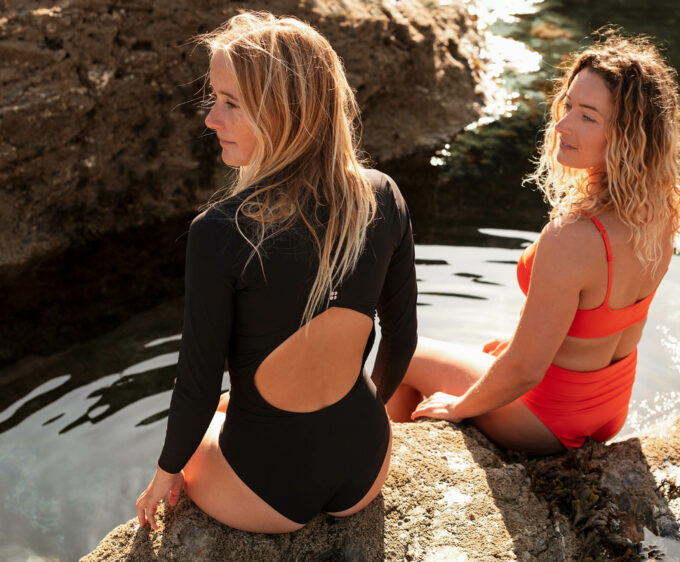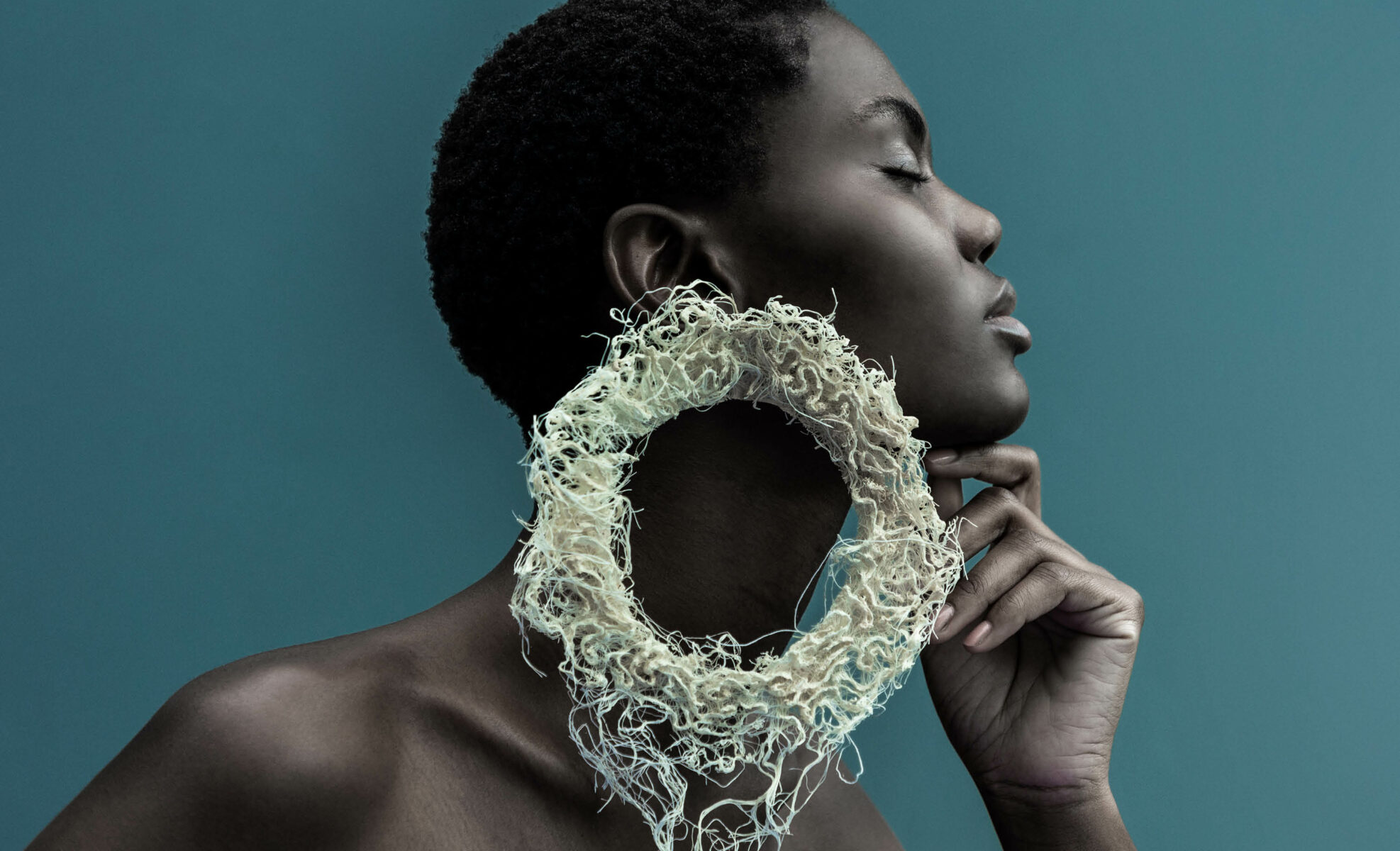
Ocean: Zena Holloway
Dive into the extraordinary world of Zena Holloway, a visionary artist and underwater photographer who has harnessed the power of nature to revolutionise fashion and design
By Glorious
Photography by Zena Holloway
Zena Holloway is a visionary artist, renowned underwater photographer, and passionate advocate for sustainability and bio-design. With a career that has taken her to the depths of the ocean, Zena’s work has not only captured the awe-inspiring beauty of underwater landscapes but has also shed light on the urgent need to address the plastic crisis plaguing our oceans and rivers.
Driven by her deep connection to the underwater world, Zena embarked on a transformative journey, exploring material science and bio-design to find innovative solutions. Through her pioneering techniques, she has revolutionised the concept of growing fashion, sculpture, and wearables from the grassroots, envisioning a future where our material world is nurtured and grown, rather than manufactured. We chat to Zena about her work and how she is inspiring others to tap into the regenerative power of the natural world and imagine a more sustainable future.
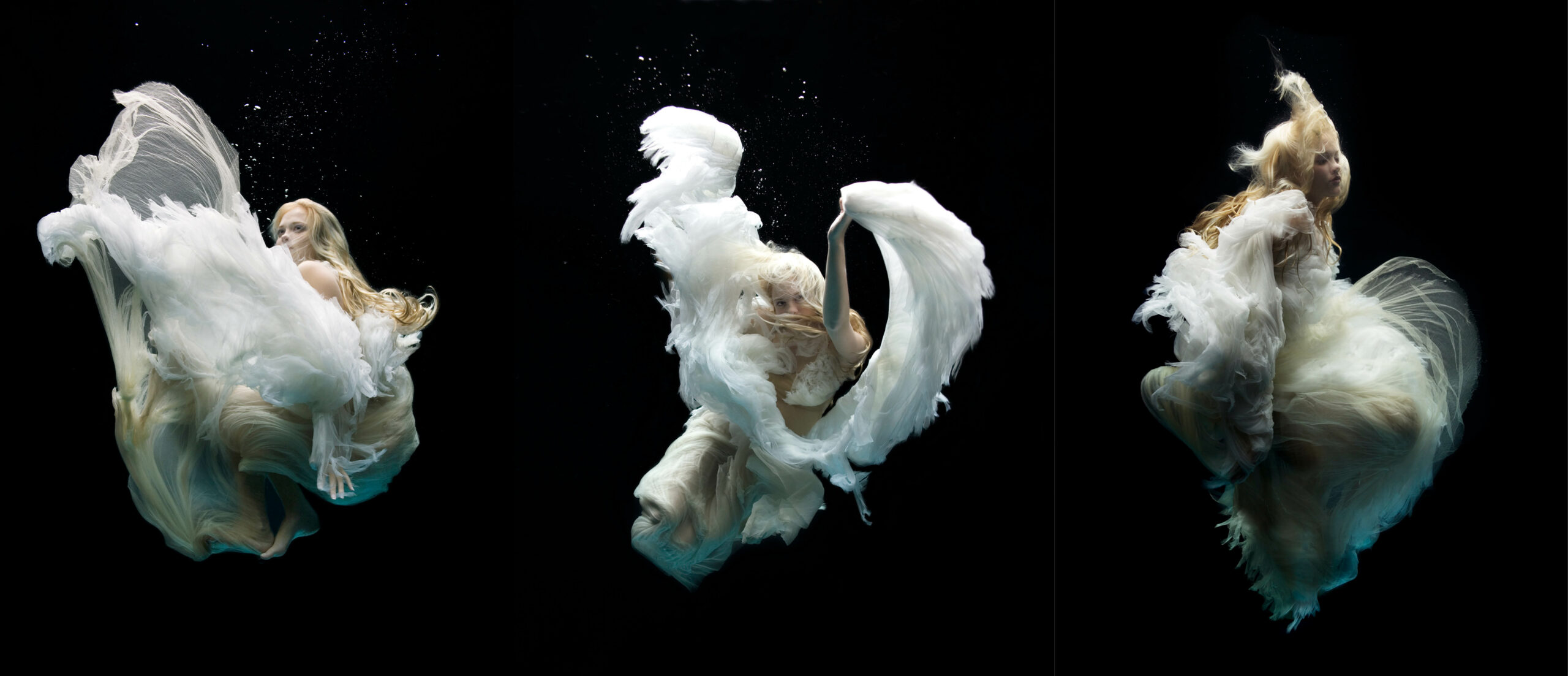
Glorious: What specific moments or experiences made you realise the true depth of the plastic crisis in our oceans and rivers?
Zena Holloway: When I first became a diving instructor, there was a lot of talk about saving the coral from the damage that the diving boats were doing to the tops of the reefs with their anchors. Some super people gathered forces, raised money and had huge buoys fitted to stop further damage. The old divers talked about how the reefs used to be loaded with fish, corals, sharks, turtles etc, and I remember wishing I could have seen the ocean in Cousteau’s time.
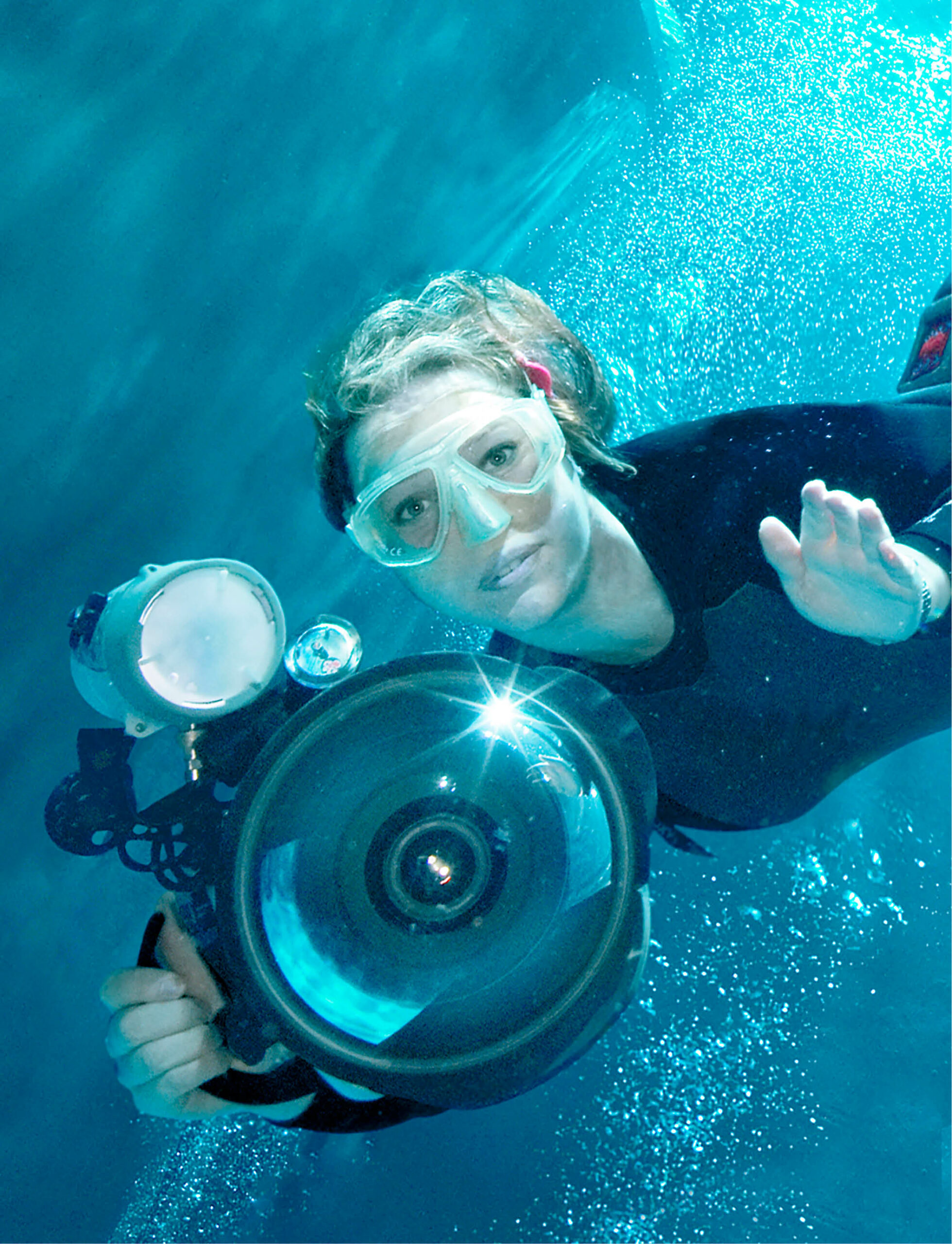
Today scientists report that all coral reefs will be virtually gone in 30 years, caused by CO2 and global warming. The coral reefs are the rainforests of the ocean and they support 25% of all marine life – so if you take away the reefs, what happens? It seems we’re thundering towards an ominous tipping point. This isn’t just about saving a few corals on top of diving reefs any longer; this is about saving whole eco-systems, and possibly us with it.
Unsurprisingly I find that the narrative of climate change has become the driving force for all my work. In 2018 I worked on the ‘Hidden Rivers’ series. In the UK we have some very special chalk streams – there are less than 200 in the world and 85% are found in South East England. They’re special because the chalk makes the rivers run crystal clear and supports a huge diversity of wildlife. I launched into the project focusing on the beauty of my local rivers, but once the camera dipped below the surface it revealed an ugly truth about pollution and over-extracted lost rivers that were being syphoned through our cities with underground tunnels. The visibility of this pollution through my camera lens was both shocking and guilt-inducing, prompting me to take action.
narrative
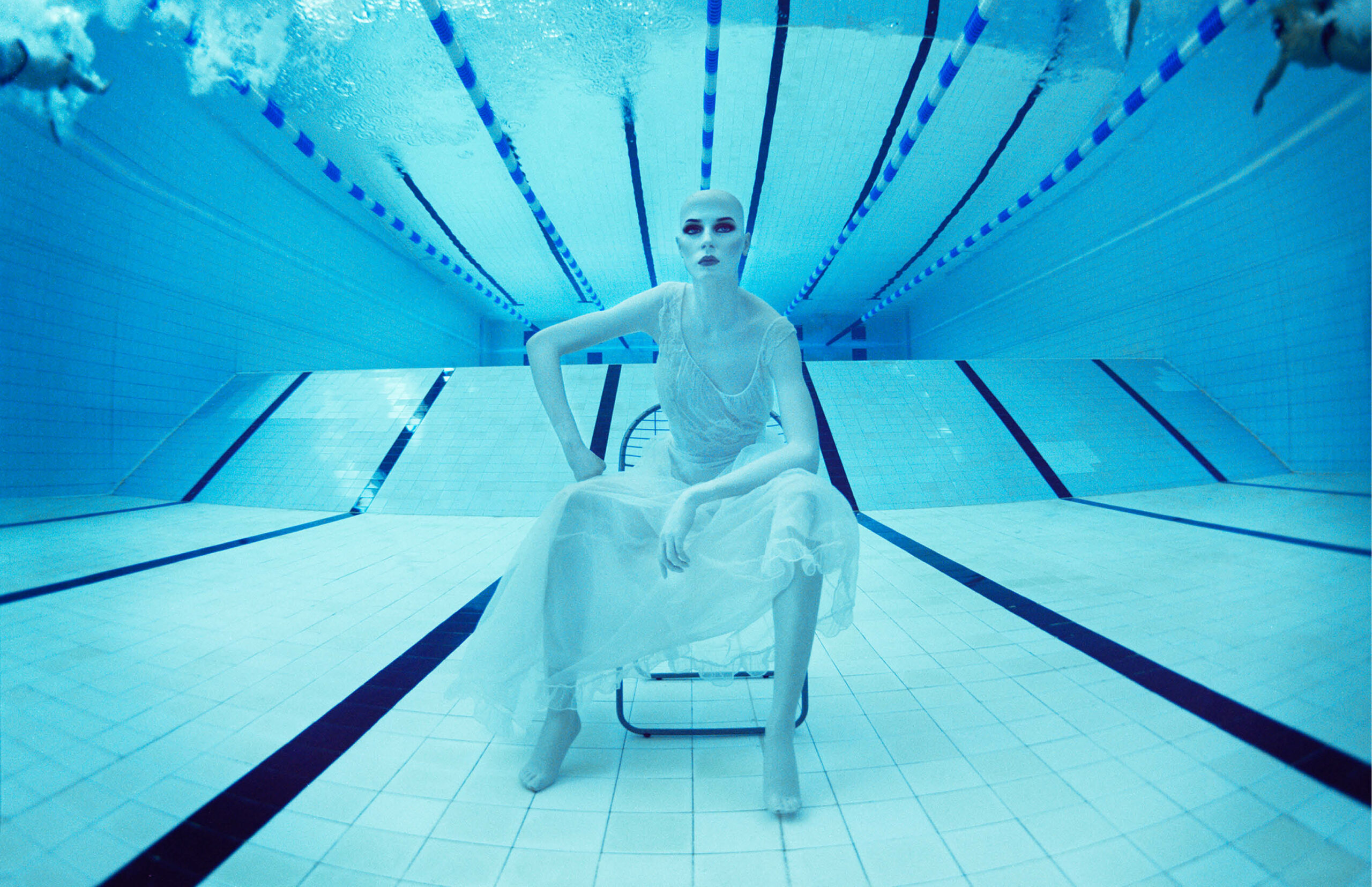
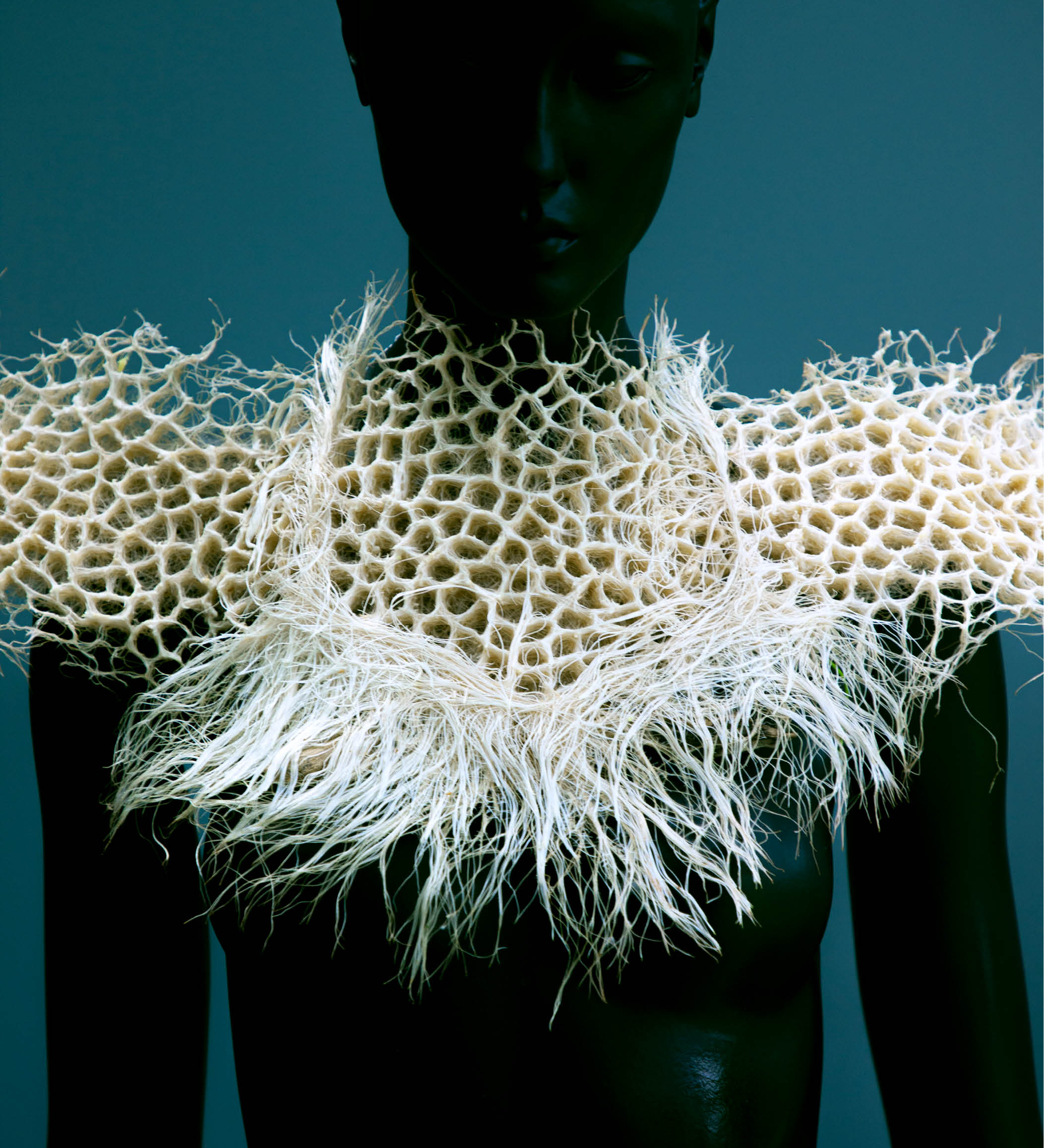
Zena Holloway: After a general rant about the (unavoidable) plastic content of my life I decided to join the material revolution – a growing movement of creative scientists, artists and thinkers that search for new ways to integrate organic processes and materials into the creation of our built environment. Most bio-designers experiment with living materials, such as fungi, algae, yeast and bacteria. For a while I grew mushrooms in my basement, searching out different types of mycelium but quickly stumbled into growing grass root.
It struck me that the roots looked a lot like bleached coral and since then I’ve been honing the technique of growing the root into beeswax moulds that reinforce sea fan shapes. The largest sea fan I’ve grown measures 175 x 105 x 5cm and it was longlisted at the Aesthetica Art Prize and exhibited at York Art Gallery. Roots are the building blocks for plant life; corals are the equivalent for sea life. I see the root sculptures as both reality and metaphor, aiming to expose the beauty and vulnerability of coral.
Glorious: You’ve since developed the roots into fashion, so tell us about the process.
Zena Holloway: Often the root feels and looks a lot like textile, so I began to make bracelets, earrings, and other wearables as an experiment. I eventually managed to grow larger pieces, and this led to a complete dress.
The idea that we could grow our clothes from seed is interesting both creatively and from an environmental point of view. It’s a concept that seems to have grabbed people’s imagination and I’ve been invited to exhibit root dresses this spring at Milan Design Week, The Green Product Award in Munich and at Raw Assembly in Melbourne. It’s an amazing opportunity but I’m now racing to grow all the new pieces in time – my studio is looking more like a garden lawn than a place of work!
The seed takes about 2 weeks to grow into the beeswax moulds. It’s a quick process but requires a regimented schedule of daily watering to get a good result. Too much water and the root turns to a sludgy mould, too little and it doesn’t grow properly.
I use water run-off from the roof of the studio, recycling the water on a loop. It’s important to me that my practise is sustainable and since starting out I’ve discovered all kinds of life hacks with natural products that I never knew existed. Amongst other things my studio cupboard now contains a healthy supply of old newspaper for making paper clay, corn starch for glue, shellac for varnish and a 5l jerry can of white vinegar for cleaning. I buy seed from a local organic farmer and the birds in my garden eat whatever is left over after I’ve harvested the root. I haven’t found ways to be sustainable with everything, but I do my best to use local materials, recycle everything possible and keep waste to a minimum.
At the moment I’m growing large sections of root so that the dress designs can flow organically rather than reverting to traditional patterns and stitching techniques. No root section is the same so it’s a creative challenge to find the right pieces to fit each outfit. It’s very exciting to see the pieces evolve and I’m loving the process of working with sustainable and natural materials.

Glorious: What happens to any leftover shoot or seed after the wheatgrass has been grown?
Zena Holloway: Leftover shoots and seeds from the wheatgrass growth process are not discarded. Instead, they are repurposed as animal fodder, minimising waste and utilising the full potential of the plant material. This approach aligns with the principles of a circular economy and showcases the versatility of the plant-based resources we work with.
Glorious: How has your work been received?
Zena Holloway: The idea that we could grow our clothes from seed is interesting both creatively and from an environmental point of view. It’s a concept that seems to have grabbed people’s imagination. Last year I exhibited root dresses at Milan Design Week, The Green Product Award in Munich and at Raw Assembly in Melbourne, then most recently I debuted a biodegradable wedding dress at the Chelsea Flower Show that won a silver medal. These are amazing opportunities, but my studio often looks more like a garden lawn than a place of work!

Glorious: What message or impact do you hope to convey through your work?
Zena Holloway: Through my work, I aim to showcase the infinite renewable power of plants and nature’s incredible capabilities. By creating fashion and sculptures from naturally woven wheatgrass structures, I hope to inspire others to explore sustainable alternatives and recognise the beauty and potential that lies within the natural world.
Glorious: How do you envision the future of a material world that is grown rather than made? What potential benefits and possibilities do you foresee for sustainability and innovation?
Zena Holloway: I believe the future holds immense potential for a material world that embraces growth over traditional manufacturing. By cultivating materials from renewable sources, we can significantly reduce our environmental impact. This shift opens up possibilities for sustainable fashion, innovative design, and a circular economy. Imagine clothing that naturally decomposes, leaving no trace of waste, or structures that seamlessly integrate with the environment. Embracing a grown material world can lead us to a future where sustainability and innovation go hand in hand, creating a healthier planet for generations to come.



